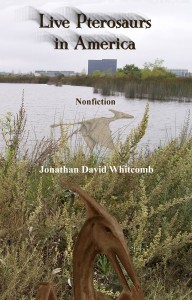I hestitate using the word “propaganda,” for it suggests deliberately misinforming. I do not accuse anyone of lies, although that accusation has been thrown at me and my associates by one critic. But generations of continuous indoctrination into universal extinctions of all species of dinosaurs and pterosaurs—that has left our Western society with a devastating weakness: Human experience and clear thinking have been kicked off the stage in favor of elaborate imaginative speculations.
How has anyone now living come to the conclusion that all species of pterosaurs became extinct? From a scientific test? No. From a mathematical formula? No. From a set of statistics? No. From early childhood, Americans and citizens of other Western countries are indoctrinated into universal extinctions of certain general types of animals, dinosaurs and pterosaurs especially. It has become a deeply ingrained assumption of our cultures.
Let’s try some critical reasoning, using basic assumptions common among biologists who live by popular models, namely Neo-Darwinism. In the book The Pterosaurs From Deep Time, the author, David M. Unwin, says, on page five:
“Pterosaurs have successfully defied more than two centuries’ worth of scientific probing for several reasons. The most obvious is the problem of trying to understand animals that are known only from fossils. Just a tiny proportion of all the pterosaurs that ever existed, probably less than one individual in a million, has actually made it into the fossil record.” (PI Press, New York, 2006)
I agree with those who take issue with using the word “record” when referring to fossils, and I suspect “one individual in a million” exaggerates the rarity of fossils, but we’ll leave those ideas alone for now. Mr. Unwin is probably supported by many paleontologists, perhaps nearly all of them, when he describes the rarity of the fossilization process. Let’s examine the consequences of this one-in-a-million fossil-to-non-fossil estimate.
Darren Naish and Pterosaur Fossils
In “Pterosaurs Alive in, like, the Modern Day,” Darren Naish takes a dismissive perspective toward modern-pterosaur suggestions, not by analyzing those critical eyewitness accounts emphasized by me and my associates: by avoiding critical accounts and emphasizing trivialities. But please note what seems to be his main point:
“The fossil record convincingly demonstrates that pterosaurs became extinct at the end of the Maastrichtian in the Late Cretaceous (65 million years ago).”
I suggest that no accumulation of fossils, not even all the fossils ever discovered, is ever capable of proving the extinction of even one species of anything, let alone all species of a particular type of animal. Naish seems almost to suggest that discovered fossils give a literal recording of precise times when various species lived. More to the point, he also proclaims that the fossils paleontologists have, combined with those they do not have, not only suggest extinctions but “convincingly demonstrate” extinctions. How rash!
Would Naish dare suggest that all pterosaur species that ever lived have left fossils that we have already discovered? I doubt he would think that. How easy to imagine that some species left no fossils that have been found by paleontologists! How did Naish arrive at the conclusion that all of those undiscovered pterosaur species became extinct long ago? Think about it. Could fossils of wolves prove that domesticated dogs are extinct? It makes no difference how fossils are dated, for fossils, regardless of when those species lived, never can prove any extinctions.
I know that Mr. Naish could reply with something like this: “We know that domesticated dogs now exist; but modern pterosaurs do not exist.” Really? How do we know that modern dogs exist? Human experience with modern dogs makes the case. With modern pterosaurs, we do have a difference, but it is subtle: Human experience demonstrates they exist, even though those flying creatures seem to be less common, elusive, and probably mostly nocturnal. Nevertheless, human experience prevails.
Related posts and pages:
Darren Naish in the Modern Day
His lengthy writings, on that one page, about questionable reports—they ring like strawman arguments to me, for the credible accounts are entirely neglected by Darren Naish. I appreciate his worthy contributions to paleontology, especially in regard to pterosaur fossils; but it seems . . . he has gone far afield in wandering into cryptozoology, and he seems unaware of how serious investigations of living pterosaurs are actually progressing.
Pterosaur Extinction . . . or Non-Extinction
I do not set myself up to be more intelligent than the paleontologists who disagree with me. But investigating reports of living pterosaurs is outside the speciality of paleontology, and I have probably spent more hours on this obscure branch of cryptozoology than all the paleontologists in the world combined. Please, if you doubt that any species of pterosaur could be now living, at least consider the length of my experience, before dismissing this idea outright, and look at the eyewitness accounts that I have analyzed.



